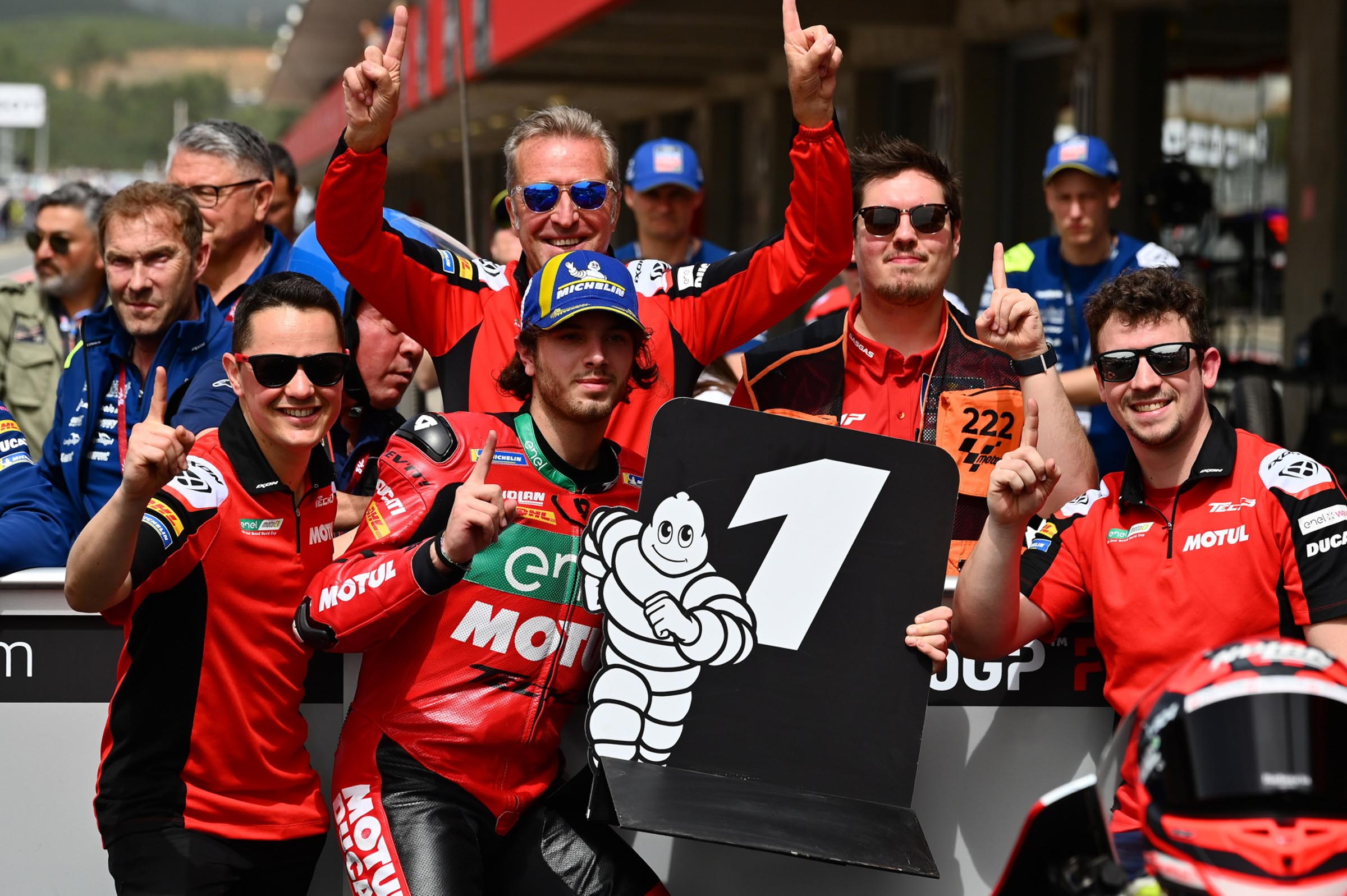Lightfighter LFR19
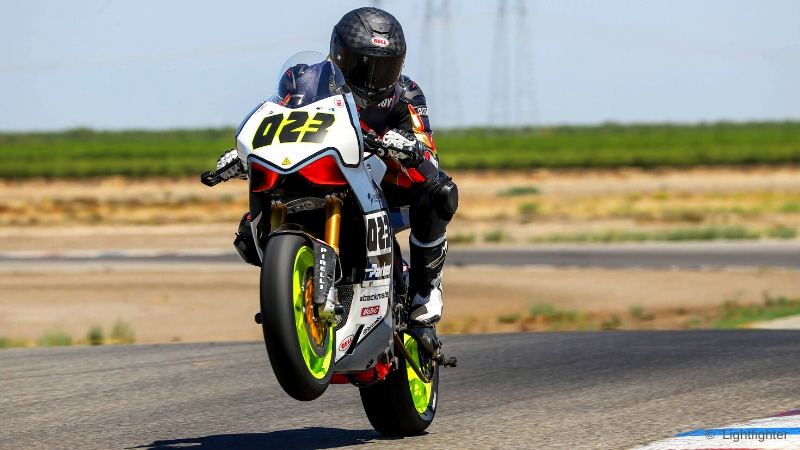
The Lightfighter LFR19 is the brainchild of two designers, Brian Wismann and Ely Schless, with a passion for electric motorcycles working together across California and Oregon in the Pacific Northwest in the United States.
At the start of the project, Brian and Ely asked themselves: what should be the priority in the design of an electric motorcycle: the chassis or the battery? To get good lap times in track use, is it better to have an agile and light bike or a more powerful but heavy one? In the first case, the design is based on the frame and rear suspension geometry, while the battery capacity (and therefore its weight and dimensions) is limited by the size of the frame. In the second scenario, the focus is on a larger battery to have high power available, but it leads to a compromise for the chassis, the size of the swingarm and the geometry of the rear suspension.

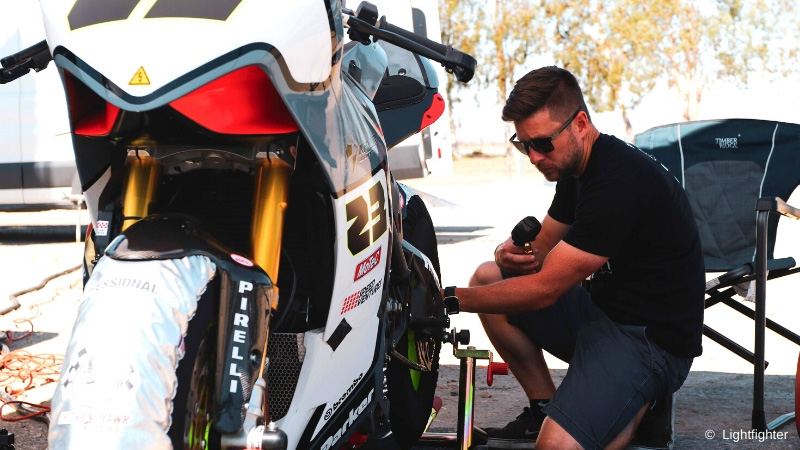
Brian Wismann, co-designer and builder of the Lightfighter LFR19, is also Vice President of Product Development at Zero Motorcycles

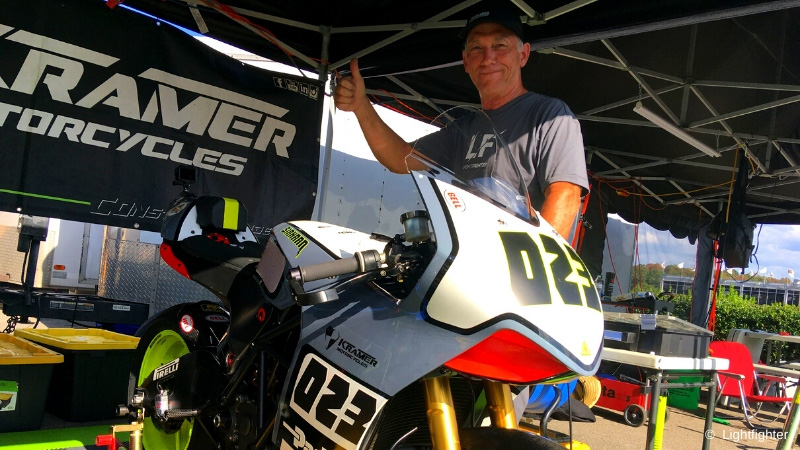
Ely Schless, a pioneer in the electric vehicle world, with over three decades worth of experience figuring out how to make things move quickly on battery power

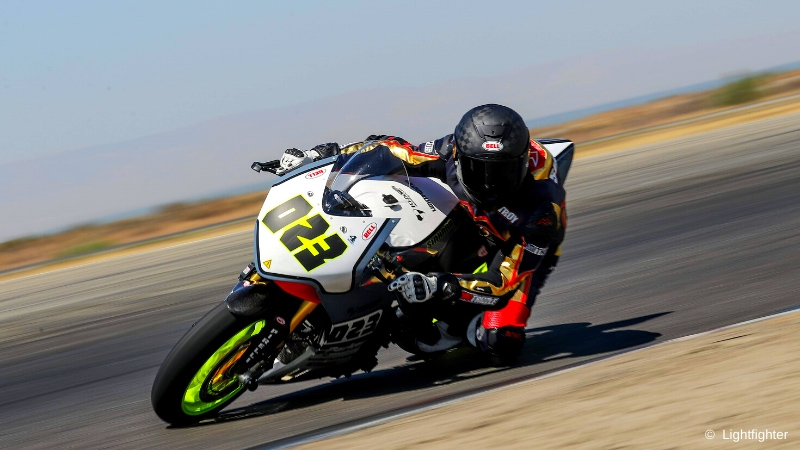
Since most prototype electric motorcycles over the past decade have been aimed at events like the TT Zero at the Isle of Man or Pikes Peak in the US, the bikes have tended to be large and powerful, but also heavy. Brian and Ely decided to take their own way for the Lightfighter. Starting from the number of laps for each race (between six and ten depending on the layout of the track), they kept to the minimum the size and weight of the battery to leave room for the optimization of the bike's chassis and suspension design. The Lightfighter takes its name exactly from the “geometry-first” approach to have a light and agile bike compared to other electric racing bikes.
Brian and Ely started from the swingarm and the rear suspension, buying those of a Yamaha R1 2015 on eBay, and built the rest of the bike around what they believed to be the key element. The fairings and the structural seat unit are the result of the collaboration with Kramer Motorcycles through their North American distributor, Joe Karovonen. The motor / gear unit (MGU) was developed by Schless by customizing a Parker-Hannifin GVM permanent magnet motor and adding gears for the transmission. The lithium ion battery was also developed by Wismann and Schless using Farasis Energy cells. The inverter comes from Cascadia Motion, formerly Rinehart Motion Systems, also based in Oregon.
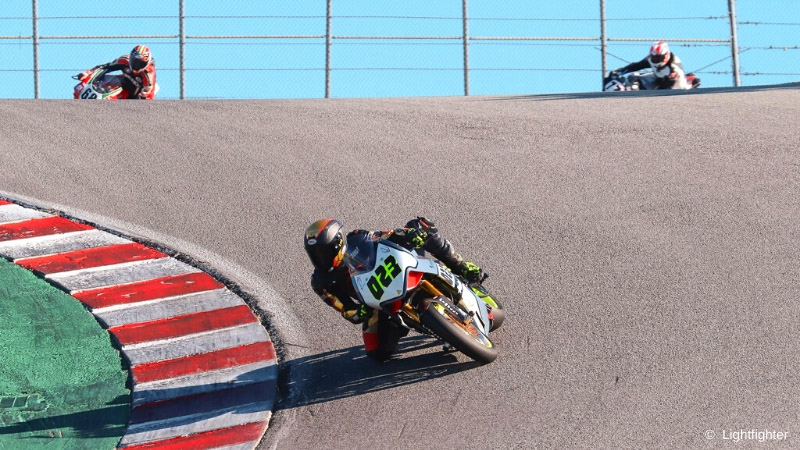
During the 2019 season, the Lightfighter raced in the AHRMA (American Historic Racing Motorcycle Association) races. The race debut took place on the Buttonwillow Raceway in August 2019 inside the Formula Thunder class. Petrol 1000cc motorcycles compete in this class which is typically dominated by Ducati Pierobon and Panigale Rs. Troy Siahaan, the rider chosen for the Lightfighter, won the first race even if the victory was not assigned to him because the bike was electric powered. However, thanks to the exceptional result, the Lightfighter got the concession to race in the Sound of Thunder 1 and Formula Thunder classes in subsequent races to fight with other 1000cc and V-Twin petrol bikes. The last race was in February 2020 in Laguna Seca, before the global lockdown due to the Coronavirus. Troy Siahaan got the victory in both the electric class and in the Sound of Thunder 1 class against petrol bikes. Waiting for the end of the crisis caused by the Coronavirus, Brian and Ely are working on the "version 2" of the bike they hope for to bring on track this year.
Lightfighter LFR19
Performances
- Max speed: 235 km / h
- Power (peak): 105 kW / 140 Hp
– Torque (Motor): 162 Nm
- Torque (at wheel): 966 Nm
- Acceleration (0-100km/h): 3.0 sec
- Weight: 170 kg
- Wheelbase: 1400 mm
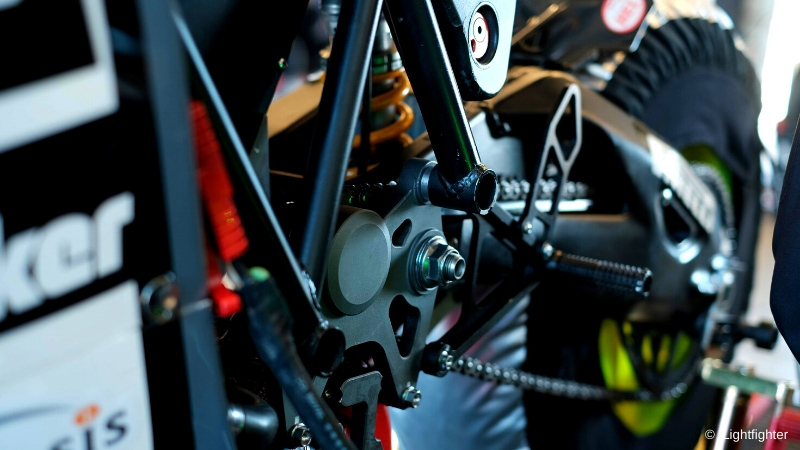
Specifications
- Motor: Parker GVM-210 permanent magnet synchronous (PMAC) at 12000 rpm
- Battery: lithium ion type NMC by Farasis Energy
- Battery capacity: 11 kWh
- Battery voltage: 360 Vdc nominal
- Battery weight: 61 kg
- Battery duration: about 15 minutes during race
- Shift: No
- Cooling: air ccoling for the battery, motor and inverter are water cooled
- Chassis: Chromoly Steel Trellis Frame
- Final transmission: chain
For further information on the Lightfighter LFR19 we recommend these two links to Motorcycle.com magazine:
Riding, And Racing, The Lightfighter LFR19 Electric Motorcycle - Part One
Riding, And Racing, The Lightfighter LFR19 Electric Motorcycle - Part Two










